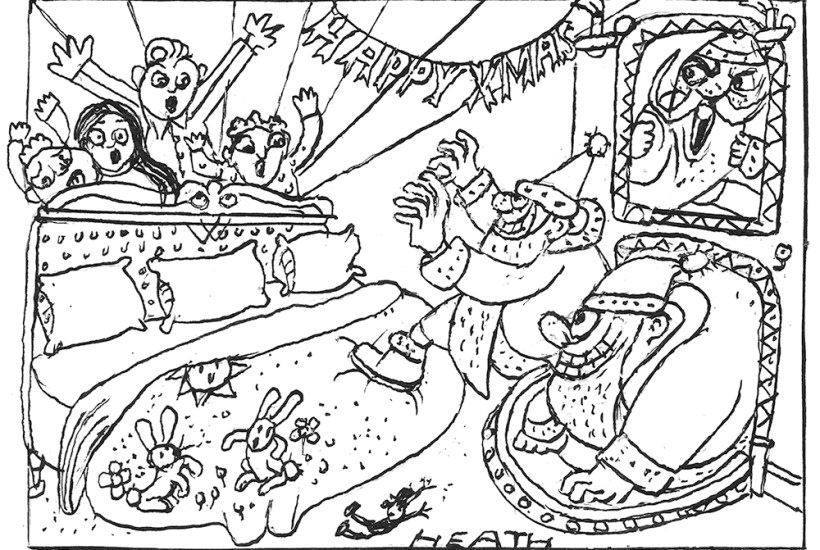For a heartwarming Christmas tale, look no further than the medieval legend of St Nicholas – a story of sex-trafficking, cannibalism and murder. The historical Nicholas is a hazy figure whose scant biography was embroidered in the Middle Ages. The 12th-century Norman poet Wace wrote a colourful account of his life. It opens with the story that has informed the modern Santa Claus. Nicholas, we are told, took pity on a man who had once been wealthy but had fallen into poverty. The man had three daughters. Things were desperate – the man concluded that the girls had to be sold into sexual slavery. Nicholas visited the man’s house on three consecutive nights and each night threw gold in through an open window.
Some of the other stories in Wace’s poem are decidedly more macabre; many involve the miraculous resurrection of children murdered or accidentally killed. One such is the Miracle of the Boiled Infant, in which a mother is so overjoyed at the news that Nicholas has been selected as the bishop that she rushes to church to hear Mass, leaving her baby in an earthen tub over a burning fire. When the service is over, she suddenly remembers her mistake and rushes home to find the baby unharmed and happily playing with the bubbles in the boiling water.
In another story, a man on a pilgrimage to St Nicholas is murdered and dismembered by an innkeeper and thrown into vats of salted meat. The man miraculously wakes the next morning and greets the innkeeper, who responds: ‘Good fellow… I killed you,/ Shattered your bones and salted your flesh./ Saint Nicholas to whom you are going/Is very powerful and full of succour.’
English versions of this miracle story are even more grisly. In the late-medieval South English Legendary the pilgrim becomes three clerks. There a butcher offers lodging to three clerks (for which read ‘students’), before murdering them in the hope of stealing their money. On discovering the clerks are broke, his wife recommends dismembering their bodies, grinding up their flesh and salting it for use in pies. Later St Nicholas appears as the couple are selling their pastries; the clerks miraculously come back to life; the butcher and his wife are moved to contrition. There are several things that are weird about this story, but probably no more weird than the story of a man travelling the world on a reindeer conveyance and sneaking into the bedrooms of sleeping children.
Modern Christmas traditions involve the wholescale deception of children. Our medieval counterparts, by contrast, saw the feast of St Nicholas as a moment to surrender power to them. In many English cathedrals, abbeys, churches and schools, the feast (6 December) was the beginning of a boy bishop’s term of office. In an atmosphere of misrule that seems to pervade when the days are short and the nights long, a young choirboy would be appointed ‘bishop’ until Holy Innocents’ Day (28 December). During his tenure he would dress in robes, preside at services, preach a sermon, and lead a procession through the streets during which a collection would be taken. The practice, like so many mad and wonderful traditions, was outlawed by Henry VIII.
Got something to add? Join the discussion and comment below.
Get 10 issues for just $10
Subscribe to The Spectator Australia today for the next 10 magazine issues, plus full online access, for just $10.
You might disagree with half of it, but you’ll enjoy reading all of it. Try your first month for free, then just $2 a week for the remainder of your first year.








Comments
Don't miss out
Join the conversation with other Spectator Australia readers. Subscribe to leave a comment.
SUBSCRIBEAlready a subscriber? Log in